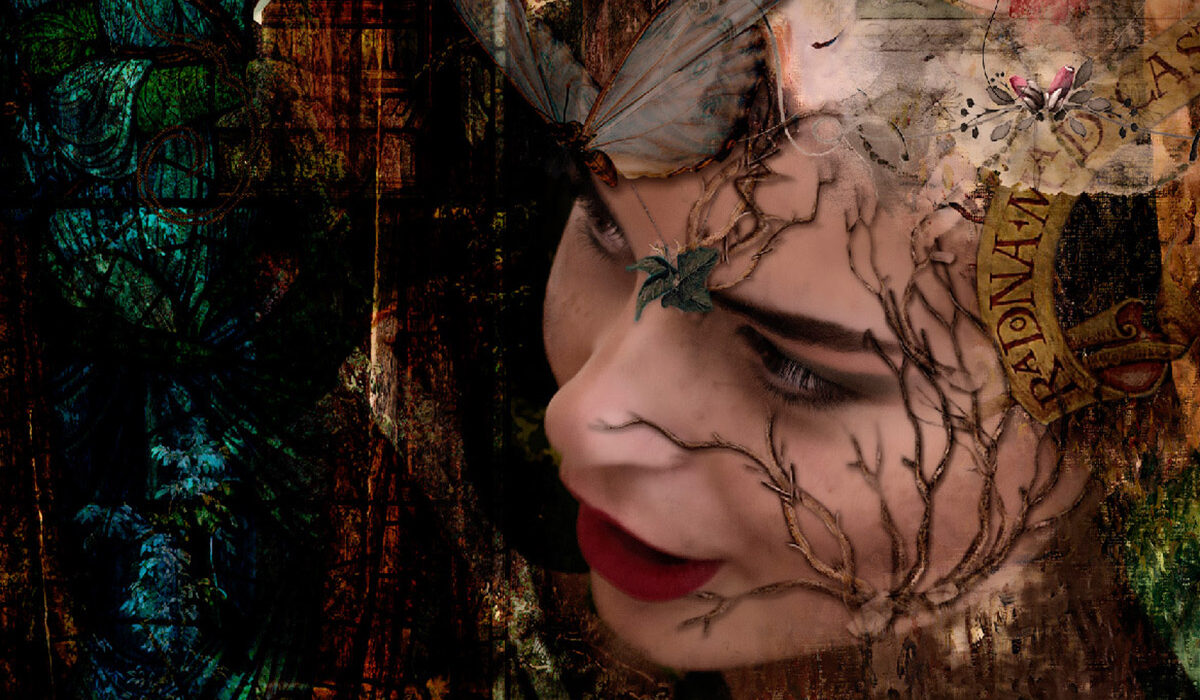— The featured artist of the 83rd issue of Living the Photo Artistic Life magazine is AWAKE artist Janice Batterbee of Spain. It’s a pleasure to interview Janice here on Quill and Camera …
Q: What got you started in digital photo artistry?
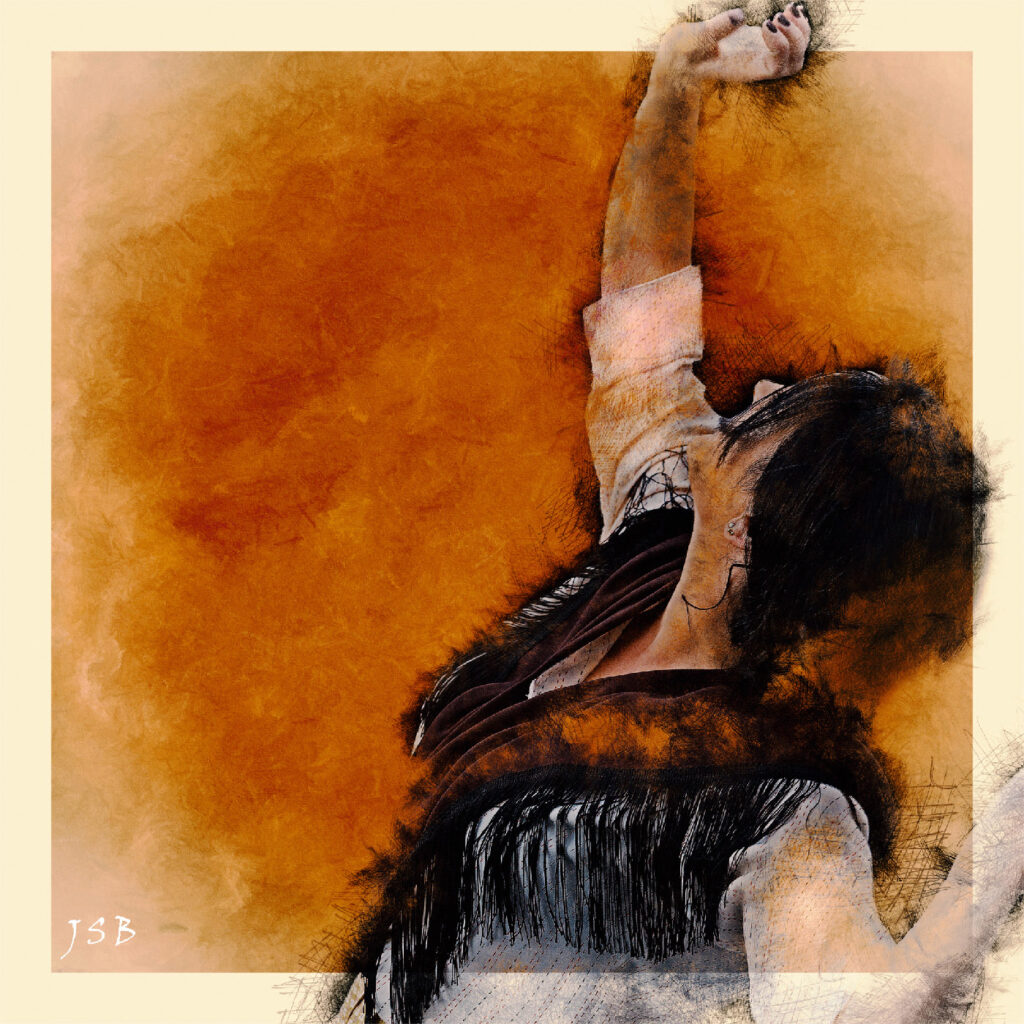
Isn’t it funny how a chain of seemingly unconnected and insignificant events can lead to something completely different? I loved taking photographs of horses (I still do) and of horse-riding, dressage, and jumping activities involving friends. About 22 years ago, I searched for carrousel images because I had promised some friends to create a composition for them. I found Scrapbook Graphics (sadly now discontinued) and started making some very amateur compositions in Photoshop. I didn’t even know about layers yet, and would cut out images using the eraser tool. When I first used Photoshop regularly, I would spend hours poring over magazines, trying to teach myself how the programme worked, and invariably becoming frustrated at my poor results. Then it all changed in 2013 when Scrapbook Graphics sent out information about Sebastian’s Photoshop Fine Art Grunge course. It sounded like just what I needed. And what an eye-opener it proved to be. It set me off on a marvelous voyage.
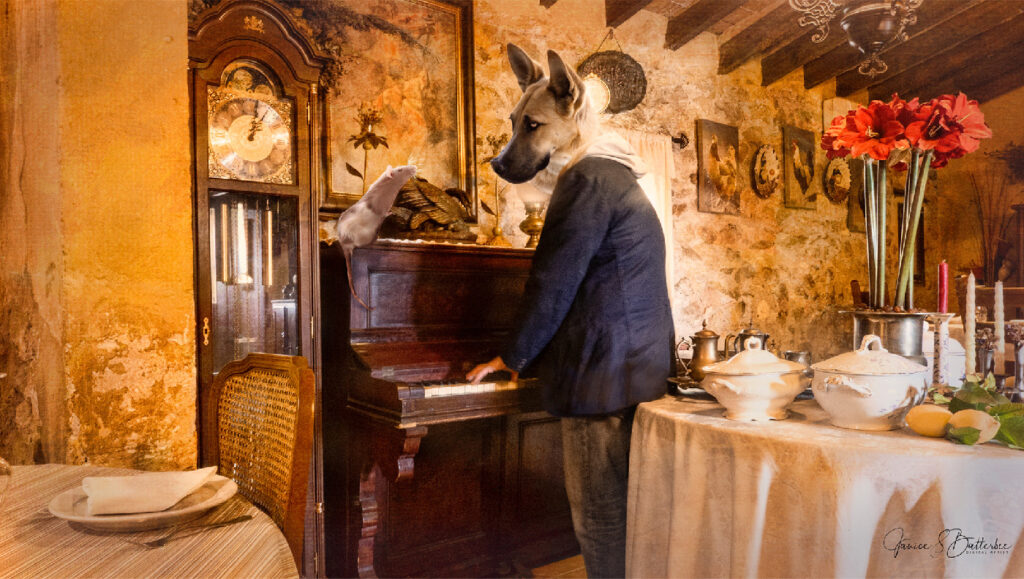
Sebastian made a video critiquing some of the initial images his new students submitted, and I was both thrilled and greatly encouraged by his comments on the piece I sent in. The course was first rate. In the usual Sebastian style, it was both educational and motivational. He set regular challenges – painting with light, using squares, favourite book titles, etc. I still have all the cheat sheets that came with the course. They were so clearly set out; it was so easy to follow them and actually make progress.
And then, suddenly … I found I could create art. It was still just in small steps but, eventually, I felt confident enough to share some of it publicly and even received encouraging comments. It’s true that as artists we should not feel the need to “play to the audience,” but who amongst us doesn’t need some encouragement along the way?
Q: When did you feel you were really on track with your art?
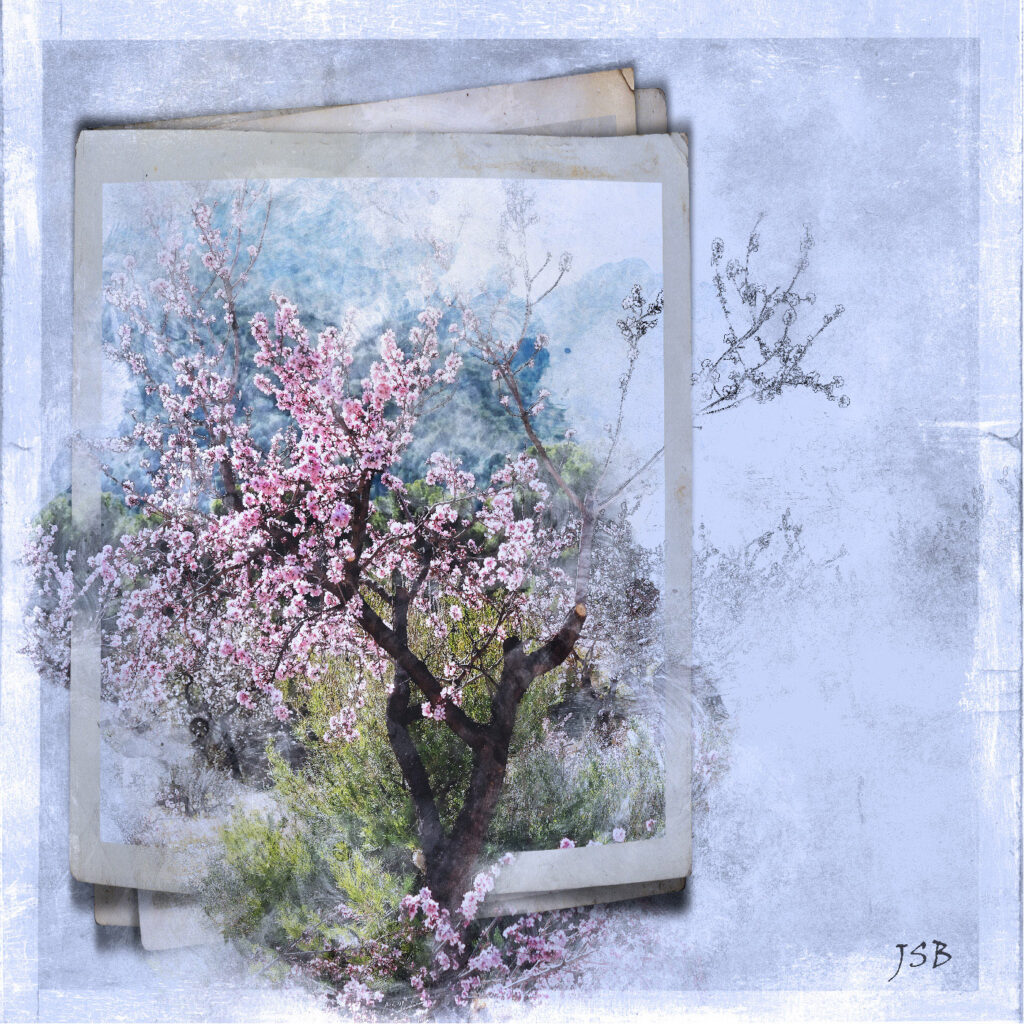
The year 2016 was the year that gave my confidence a boost. My “Almond Sketch” was chosen by Sebastian as an example of a watercolour painting in Photoshop. It was printed and put up for sale in one of his favourite shops . . . and it sold! That was truly amazing. Then Sebastian included another piece in his selection of students’ art works (the “Dancer”) to be made available for sale on t-shirts and tote bags produced in New Zealand. I still have a treasured tote bag I purchased of another student’s work. That was definitely the year it all started to come together.
Q: How do you approach your work? Any particular process you tend to follow?
I usually start off with a photograph that I have taken, and then the image seems to metamorphose of its own accord. It’s a sort of magic. I can lose myself for hours in a new piece of work. Occasionally, I will leave it overnight, especially when I know exactly what I want to do the next day. I think most of my work may not appear to be particularly complex, but that has usually been achieved at the cost of several hours’ work. At other times, I will have what feels like a clear idea of what I want to accomplish, but again, it inevitably seems to take on a life of its own and turns into something completely different. I am currently learning how to paint by hand with digital brushes and so I tend to turn a lot of my compositions into paintings. I know I don’t I have a recognizable style as yet, but that is not my purpose. I just wish to continue to experiment and innovate and not be tied down to a particular style.
Q: What inspires your work?
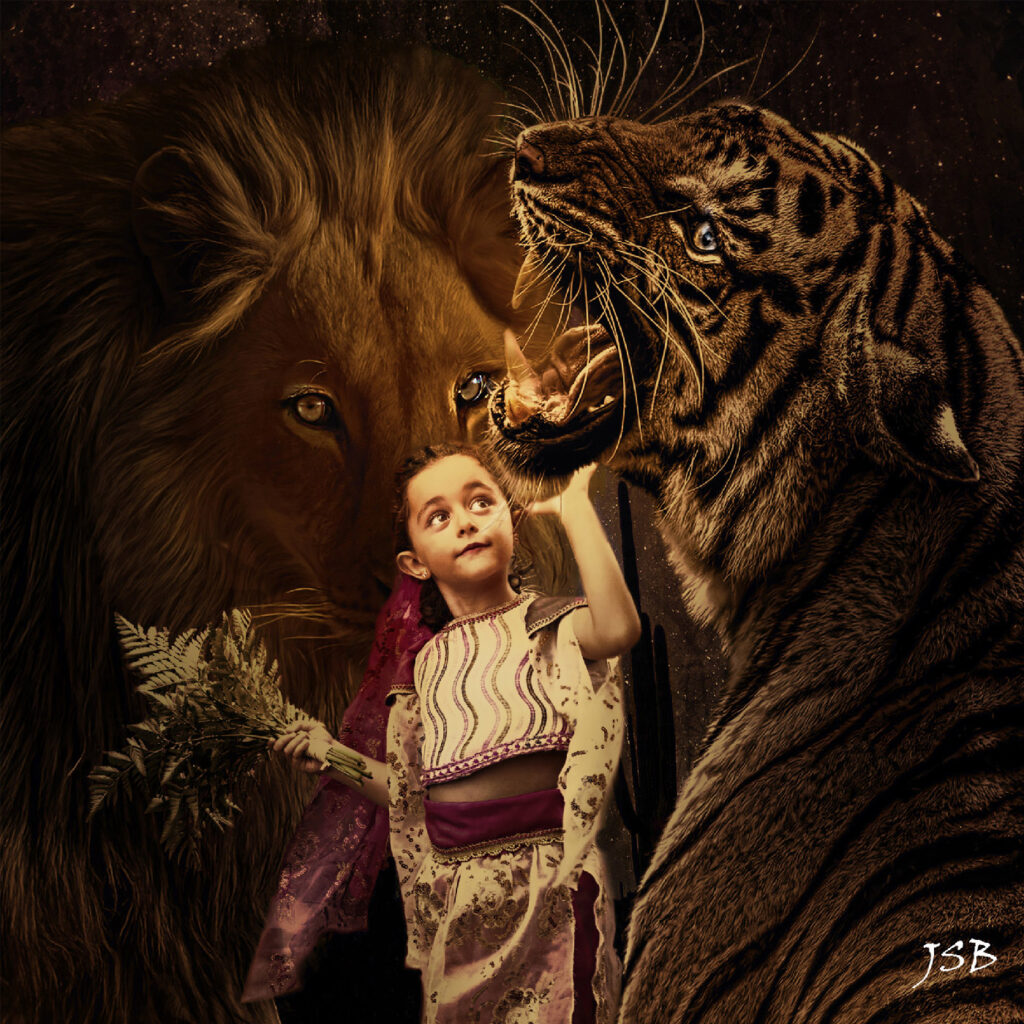
I have a collection of quotes which I go through when I run into a dry patch. And art books are another useful resource. Because even if your work is based on an existing work of art, it is never a simple copy. To quote Salvador Dali, “Those who do not want to imitate anything produce nothing.” And, of course, another great source of inspiration is the incredibly imaginative work created by fellow artists in the AWAKE and KAIZEN groups. I try to spend at least a few minutes every day visiting the private group pages to admire the art posted there. There’s always something new to see, and you never know which piece might, in turn, lead to fresh ideas you can explore yourself.
Q: What keeps you motivated?
While it’s a fine thing to be absorbed in art for its own sake, my greatest satisfaction is to create work for a purpose – whether for friends or for projects. There is no better pleasure for me than to see the smile on a friend’s face on receiving a piece of art that means something special to them. A couple of years ago, I offered my work to the PAW rescue organisation in the U.S. I produced paintings of people’s favourite pets from the photographs they sent in. Each painting raised $50 for the charity. More recently, I created a painting for the winner of one of the prizes in a tombola (a sort of raffle) to raise funds for the “Colores de Calcuta” charity. My plan is to use my skills again this year if I can to raise money for another cause.
Q: What does living a photo artistic life mean to you?
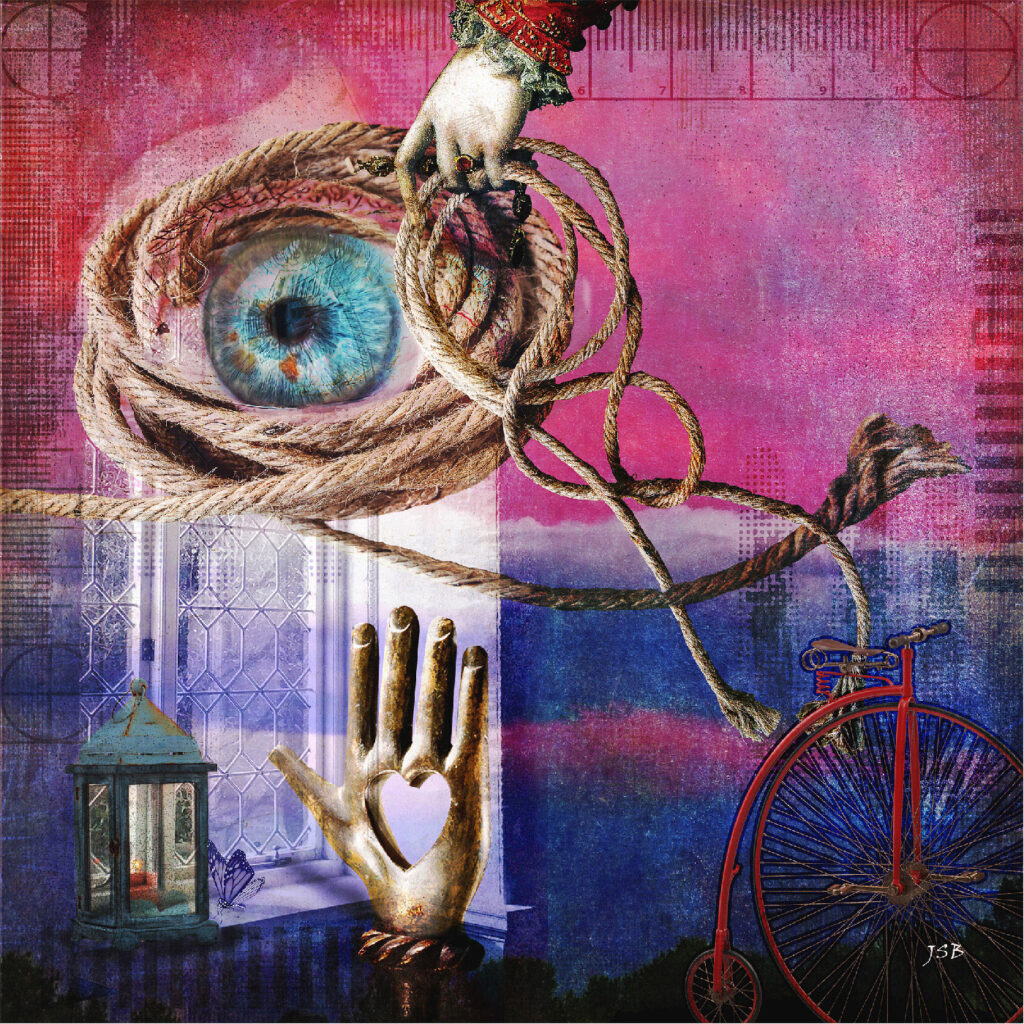
It makes me think of one of Sebastian’s challenges of taking photographs around you and turning some of them into a composition, and then using some of the unused images in a second piece and finally combining everything into a third one. I spent a lunchtime walking around my workplace photographing the weirdest things – bits of wall, the tiles in a bathroom, signs on office doors, ceiling lights, etc. It was fun and the result was a piece of art created as if from thin air. I feel that being able to create art anywhere, from anything, is what living an artistic life is about.
Q: Any advice or tips for aspiring digital artists?
It is important to keep learning and exploring new ideas and techniques so as not to fall into the dreaded Slough of Despond, where you feel that everything you produce is worthless, boring, or repetitive.
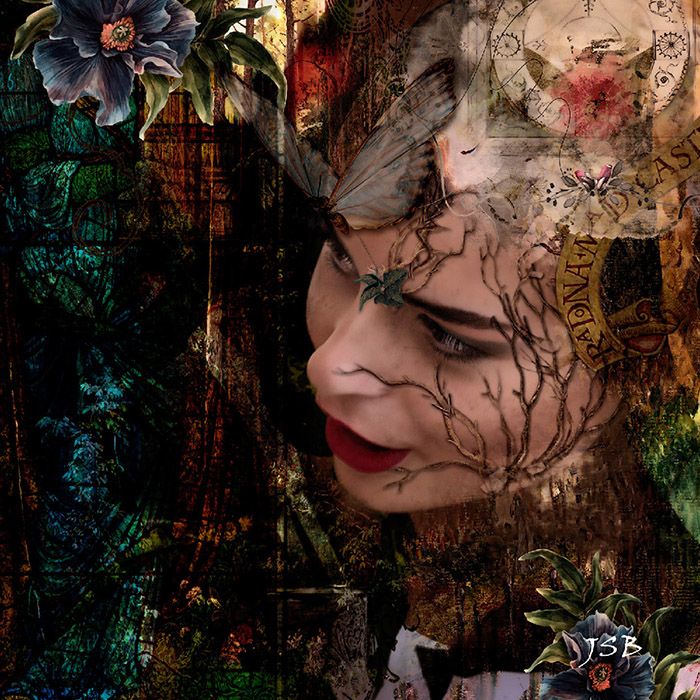
I work on my art every single day. If I’m not actually creating something, I am watching a tutorial and practicing what I have learned.
A lot of it might end up being scrapped, but that’s fine. You just keep going regardless. It’s a bit like getting straight back on a horse if you fall off. If you don’t, you lose your nerve.
Sitting down every day to create is critical. Picasso might have said it best: “Inspiration exists, but it has to find you working.”
..

